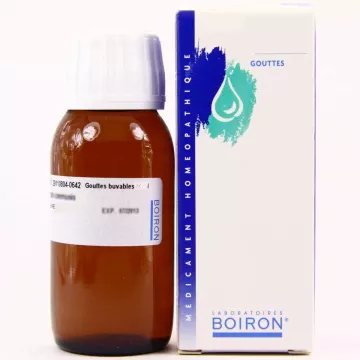
What is hip osteoarthritis?
Osteoarthritis of the hip, also known as coxarthrosis, is a degenerative condition affecting the hip joint. The condition is characterized by degradation of the cartilage, the smooth tissue that covers the ends of the bones forming the joint. Over time, the thinning or disappearance of the cartilage leads to pain, stiffness and limited movement, significantly impacting the individual's quality of life.
What are the main causes of osteoarthritis of the hip?
Several factors can contribute to the development ofosteoarthritis of the hip. Age is the main risk factor, with the likelihood of onset increasing with advancing age. Other factors include a family history of osteoarthritis, previous hip injuries, excess weight, intense and repetitive physical activity, and certain metabolic diseases.
How is osteoarthritis of the hip diagnosed?
Diagnosis ofosteoarthritis of the hip is mainly based on a clinical examination carried out by a healthcare professional. X-rays may be prescribed to observe the condition of the joint, including the reduction of joint space and the presence of osteophytes. Complementary examinations, such as MRI, may be useful to assess the extent of cartilage damage.
What treatments are available for osteoarthritis of the hip?
Treatment ofosteoarthritis of the hip aims to relieve pain and maintain joint mobility. Treatment options include non-steroidal anti-inflammatory drugs (NSAIDs), physiotherapy and adapted physical activity. In more severe cases, corticosteroid or hyaluronic acid injections may be proposed. When conservative treatments are no longer sufficient to manage pain and disability, surgery, such as hip replacement, may be considered.
How can osteoarthritis of the hip be prevented?
Although it's not always possible to preventhip osteoarthritis, adopting a healthy lifestyle can reduce the risk of developing the condition. We recommend maintaining a healthy body weight, taking regular exercise, avoiding repetitive movements and joint overload, and eating a balanced diet rich in nutrients that promote joint health.
What are the first signs of osteoarthritis of the hip?
The first signs ofosteoarthritis of the hip usually include pain in the groin, thigh or knee that intensifies during activities such as walking, climbing stairs, or after a period of inactivity. Morning stiffness of the joint and reduced mobility may also be observed, making it difficult to perform everyday movements such as bending over or putting on shoes.
How does physical activity influence osteoarthritis of the hip?
Physical activity is crucial in the management ofosteoarthritis of the hip. It helps to strengthen the muscles surrounding the joint, improve mobility and reduce pain. However, it's important to choose low-impact exercises, such as swimming or cycling, to avoid putting excessive pressure on the hip. A healthcare professional can recommend an exercise program tailored to each individual.
Can osteoarthritis of the hip be cured?
To date, there is no cure forosteoarthritis of the hip. The treatment options available are mainly aimed at relieving symptoms and improving patients' quality of life. Research continues to advance, however, and new therapeutic approaches, including biological treatments and cartilage regeneration techniques, are under investigation.
What role does diet play in the management of osteoarthritis of the hip?
Diet plays an important role in the management ofosteoarthritis of the hip. A diet rich in fruit, vegetables and oily fish (sources of omega-3), and low in refined sugars and saturated fats, can help reduce inflammation and maintain a healthy body weight, which is crucial for reducing pressure on joints. Dietary supplements such as glucosamine and chondroitin are sometimes recommended, although their efficacy is open to debate.
What innovations are there in the treatment of osteoarthritis of the hip?
Innovations in the treatment ofosteoarthritis of the hip include the development of less invasive surgical techniques, the use of stem cell therapy, and the application of regenerative medicine in an attempt to restore damaged cartilage. Advances in the materials used for hip prostheses also offer longer-lasting options, better suited to patients' active lifestyles. Research continues to optimize these treatments and explore new therapeutic avenues.